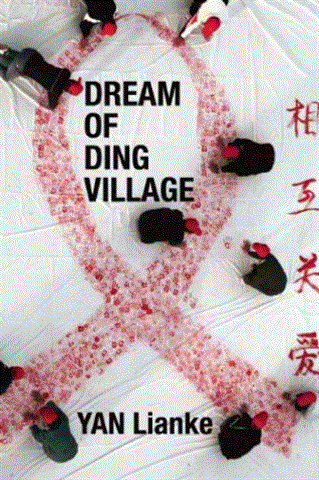
 Based on a true epidemic of AIDS blood-contamination in China, this fascinating, chilling novel is narrated by a dead 12-year-old boy, buried behind the brick wall of the elementary school. He's the murdered son of Ding Hui, the first and richest of the blood merchants and primary destroyer of the village.
Based on a true epidemic of AIDS blood-contamination in China, this fascinating, chilling novel is narrated by a dead 12-year-old boy, buried behind the brick wall of the elementary school. He's the murdered son of Ding Hui, the first and richest of the blood merchants and primary destroyer of the village.
When the government offers good money for blood, in the rush to wealth the villagers enthusiastically give too much too often, become anemic, need blood transfusions and become part of the rampant spreading of AIDS. As the story opens, in this village of 800 people on the East Henan plain, 40 have died this year from what they call "the fever," and they're beginning to die faster and faster.
Based on three years of research into the real-life scandal, Yan's tale sounds like pretty grim going. Instead, the novel is gripping, swift, heartfelt, occasionally exhilarating and often surprising, due in large part to the book's two big aces: the charming, naïve narrative voice of the dead boy and the dynamic, larger-than-life figure of grandpa, the central character and the only morally grounded citizen of Ding Village.
When the sick gather in the elementary school where the boy is buried to live out their last days communally, grandpa becomes their leader and spokesperson. His benign reign over this makeshift hospice for the sick lasts the first half of the book, until he is overthrown by two younger men who institute corruption, unreasonable laws and an era of bullying. Grandpa is blessed with the power of clairvoyant dreams and some sequences in the book occur twice, first as a dream in italics and then again in real life. He's the only one who dares to confront his powerful, corrupt son, Ding Hui, and they clash in a startling, violent fight to the death in the village center.
The story's many incidental characters, infected and not, take turns coming to the fore in a last, desperate reaching for love and power. Unforgettable scenes abound. A dying village singer gives his final public performance. A husband tries to give the disease to his wife to prevent her from remarrying after his death. Married villagers abandoned by their spouses turn to each other for solace in their last days alive. The entire village chops down trees in a frenzy to make their own coffins, competing to see who will have the largest and most elaborate gravestones. As much about human greed as about a devastating disease, the cautionary tale builds toward a climactic wedding scene, surely one of the strangest in literature, in which both bride and bridegroom are deceased.
Like Albert Camus' The Plague, the novel works on more than one level, not only as a commentary on the growth of modern China but opening outward into an existential parable about what human beings think is important in this short, short life. All of us are living in Ding Village, infected with death and waiting out our days. In these lives, with a heightened awareness of death, every second counts, every bit of happiness matters. As they should in our own.--Nick DiMartino
Shelf Talker: A novel based on a actual epidemic of AIDS blood-contamination in China, narrated by a dead boy, is both a commentary on modern China and a gripping parable about what we consider important in our lives.

